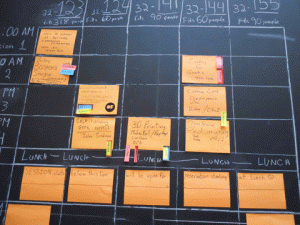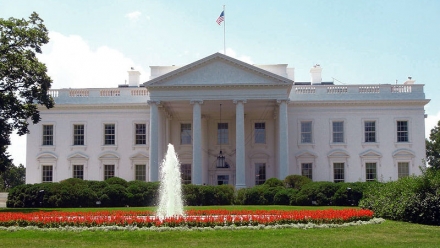Giovanni Rodriguez is a long time social tech advocate who pinged me a few weeks ago about a series of geek-style unconferences the White House has been doing. The work was serving as the foundation for a new consulting group he had joined and was helping lead.
I was interested but skeptical, too. I don’t usually write about consulting groups but this seemed a bit different. It reminded me of how much influence geeks have had on society over the past few years.
My start in the geek world began with an online conference I did in 2004 about RSS. It served as my introduction to the geek community. I, myself, soon realized a community had already begun to form around a simple metaphor — the conversation — as best told through a defining work — The Cluetrain Manifesto.
 Today, our perspectives about the meaning of a conversation is the foundation for so much of what we know in this Web and mobile world. Facebook and Twitter are built on the concept of the conversation and how to connect people. Enterprise provider Salesforce.com built an activity stream application called Chatter that has emerged as one of the company’s most important new technologies. It is essentially a conversation medium.
Today, our perspectives about the meaning of a conversation is the foundation for so much of what we know in this Web and mobile world. Facebook and Twitter are built on the concept of the conversation and how to connect people. Enterprise provider Salesforce.com built an activity stream application called Chatter that has emerged as one of the company’s most important new technologies. It is essentially a conversation medium.
Geeks have led the way in building the conversation economy in part by doing unconferences. The unconference format became especially popular with “Bar Camps,” which emerged in 2005. The first event occurred at the Socialtext offices in Palo Alto as somewhat of a spoof of the participant driven, invite only Foo Camp, hosted every year by Tim O’Reilly. The bar camp idea took root as more than 200 people attended the first event. Soon, bar camps were being conducted throughout the world.
They were much in the style of the way people worked on the Web. They were very loosely structured. Participants set the agenda. People wrote down topics and posted them on sticky notes at the time and room where there was an open space. It became in many ways the seeding for a distributed developer network. People would leave these unconference and then gather online. They in part catalyzed the growth of developer communities and an app renaissance that has disrupted today’s technology landscape. The camp format is still popular as you see with such events as Word Camp, an unconference for the WordPress community, which just had its most recent event this weekend here in Portland.
Rodriguez colleague, Toby Chaudhuri, has worked with the White House to do more than 20 unconferences as a way to weave conversations into its race based initiatives, in particular with the hispanic community.
The White House manages four race based initiatives. These efforts are designed to make sure federal protections are granted to communities that need them the most. Hispanics, African Americans, Asian Americans/Pacific Islanders and American Indians/Alaskan Natives make up these different groups. The interest is in taking the unconference format and extending it to other race based efforts. A lot depends on the White House budget, and of course, if President Barack Obama gets reelected.
Historically, the White House would fund an initiative, setting the bureaucratic wheels into motion. A community would get support and then the top down process would go into effect. That usually meant a senior level official would go to the local community and give a speech at a public place such as a local school.
The first unconference was at the White House.They then expanded the effort to other cities across the country. Hilda Ramirez attended the San Jose unconference with more than 500 other people – all leaders in the Silicon Valley hispanic community. Several attendees traveled from Los Angeles and as far north as Eureka, Ca. Sessions were one hour. Notes were recorded in Google Docs for later review. The White House, she said, had been using whiteboards to keep notes. A White House community was built on LaPlaza.net. The most recent unconference was in June.
Ramirez said a community emerged from the initiative. She calls it a movement more than anything else .The group now has a unified community on issues such as immigration reform. It lead to the formation of the California Latino Leadership Network. The group has a growing influence. It now often meets with federal and elected officials. Ramirez and others were invited to the White House for a national immigration summit.
Rodriguez said the effort has been a massive experiment in bar camps. The geek style unconferences have done what the bar camps did in their earliest days. They changed behavior.
Ramirez said SocialxDesign is extending the concept of the unconference to the enterprise by helping organizations understand the power that can come when a new dialogue begins and networks form. We’ll see how that goes. But I expect the firm will see far more mainstream acceptance for the concept of the unconference – especially if they can look to the White House for inspiration.
I guess what I am most excited about is this idea of conversations spreading deeper into politics. I love the idea of the president asking people to talk to each other and form networks. For it’s not up to the president to fix things – it’s up to us.
